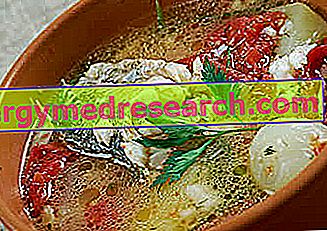Important introduction
Being a delicious target of infections of all kinds, even the teeth are often found in the sight of bacteria.

Tooth infections are numerous and varied, and each of them is distinguished by its triggering cause and the symptoms with which it occurs (to learn more, see the introductory article on dental infections).
Table of dental infections
To simplify the analysis and offer an immediate understanding of the topic, the table shows all the main dental infections. We invite the reader to dwell on causes and symptoms to anticipate infections, possibly containing them in the bud. The following treatment will also present the therapies currently available to remove the infectious outbreak.
Cavity
Infection triggered by the attack of some oral bacteria directly on the tooth enamel. The infection, evolving in a negative sense, can progressively destroy the hard tissues of the tooth, up to spoil the pulp.
| CAUSES OF INFECTION | SYMPTOMS OF INFECTION | AVAILABLE TREATMENTS |
|
|
|
pulpitis
Inflammation of the dental pulp (inflammation of the tooth nerve)
| CAUSES OF INFECTION | SYMPTOMS OF INFECTION | AVAILABLE TREATMENTS |
|
|
|
Tooth abscess
Accumulation of pus (bacteria, white blood cells, cellular debris and plasma) in the tissues surrounding a tooth. The dental abscess tends to form, in particular, at the level of the gingiva, mandibular bone or dental pulp.
| CAUSES AND RISK FACTORS OF INFECTION | SYMPTOMS OF INFECTION | AVAILABLE TREATMENTS |
|
|
|
Dental cyst
Pathological sac lined with epithelium of lining and filled with serous, mucous or gaseous fluid. Typical complication of pulpal necrosis, the dental cyst always requires a rather invasive dental procedure.
| CAUSES OF INFECTION | SYMPTOMS OF INFECTION | AVAILABLE TREATMENTS |
|
|
|
Dental granuloma
Chronic inflammation, generally asymptomatic and non-suppurative, of the root tip and its surrounding tissues
| CAUSES OF INFECTION | SYMPTOMS OF INFECTION | AVAILABLE TREATMENTS |
|
|
|
alveolitis
Inflammation of the alveolus, the bone cavity in which the roots of the teeth are housed. This is a typical infection that occurs after the extraction of a wisdom tooth or any other tooth. The condition tends to self-purify within a few days or a few weeks after the onset of symptoms.
| CAUSES OF INFECTION | SYMPTOMS OF INFECTION | AVAILABLE TREATMENTS |
|
| Alveolite tends to regress by itself, without necessarily intervening with a specific cure. No therapy can effectively reverse the infection in a short time. However, there are some tricks, useful for stopping or masking - albeit partially - the pain:
|
Gingivitis
Inflammation of the gums. Generally, the phenomenon is not worrisome and does not always hide an al dente infection. Other times, on the other hand, gingivitis is an indicator light of serious dental pathologies such as pyorrhea.
| CAUSES OF INFECTION | SYMPTOMS OF INFECTION | AVAILABLE TREATMENTS |
|
| Treatment depends on the underlying cause. In general, gingivitis resolves after careful scaling. However, when gingivitis hides tooth infections, it is necessary to intervene more aggressively by removing the responsible pathogen (eg, filling, devitalization, apicectomy, etc.). |
Piorrea or periodontitis
Severe gingival infection of the periodontium, the teeth supporting apparatus consisting of gingiva, elastic connecting fibers and mandibular / maxillary bone. It is a serious dental infection that, by slowly destroying soft tissues and supporting bones, promotes the loss of permanent teeth.
| CAUSES OF INFECTION | SYMPTOMS OF INFECTION | AVAILABLE TREATMENTS |
|
|
|



